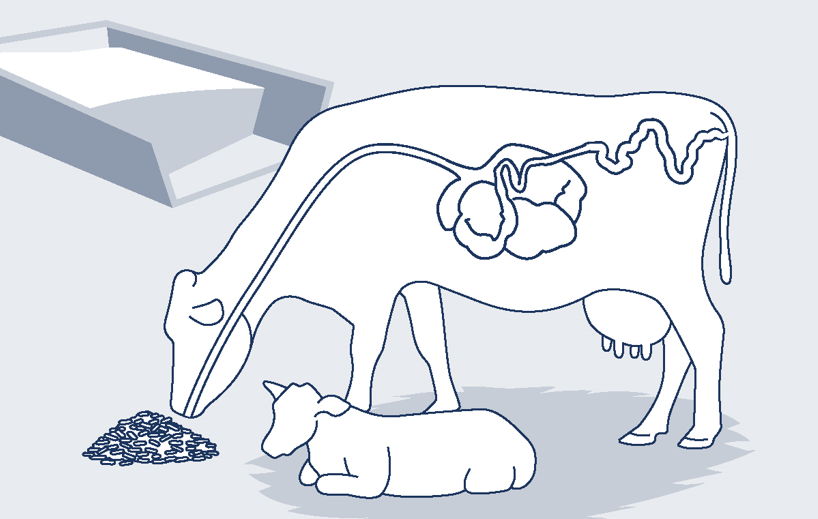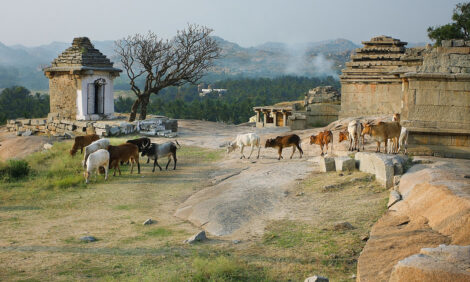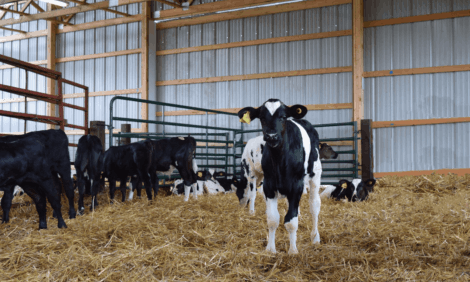



How to reduce the incidence of inflammation in transition dairy cows?
Emilie Arcier of Lallemand Animal Nutrition, explains the impacts of inflammation in dairy cowsDairy cows experience several physiological, metabolic, and environmental changes during the transition period. These can lead to immune imbalance or dysregulation and ultimately inflammation, oxidative stress, and excessive lipid mobilization.
Despite intensive academic and industry focus, the transition period remains a big challenge to animal welfare, farm profitability, and dairy sustainability. In this interview, Emilie Arcier, Ruminant Technical Deployer at Lallemand Animal Nutrition, explains the impacts of inflammation in dairy cows during the transition challenges.
Tell us more about dairy cow transition challenges, and where it comes from.
“The transition period is the time from one month before to one month after parturition. This period is one of the most challenging one for dairy cows as it is marked by physiological, metabolic, and inflammatory adjustments.
During calving transition the cow is facing multiple metabolic stresses. For example, the increased metabolic demand due to changes in nutrient intake and metabolism often leads to a negative energy balance and to a metabolic stress. Also, increased fat mobilisation during periods of negative energy balance can lead to an increased risk of ketosis. Furthermore; the stress the ruminant digestive system experiences due to dietary changes can compromise the total digestive tract (rumen and lower gut), which can lead to pathological permeability of the intestinal wall, called the "leaky gut syndrome". A leaky digestive system and immune activation at calving can be the root cause of transition disorders. As an example, a trial conducted in collaboration with Lallemand, published in Journal of Dairy Science in 2018 and 2019 in transition Holstein dairy cows showed that parturition disturbs rumen tight junctions, leading to lipopolysaccharide (LPS) passage and local inflammation.
It’s important to realise the traditional focus has emphasised the production of metabolites such as ketones and the development of hypocalcaemia as causal to transition cow problems. However, recent research takes holistic transition management focusing on inflammation as a cornerstone of dairy cow transition disorders.”
What is the impact of inflammation?
“Well, recent research shows inflammation is activated through metabolic changes and LPS passage through the mammary gland, the uterus and the total gastrointestinal tract resulting in impaired reproduction, fatty liver, hypocalcaemia, and ketosis. Cow longevity or reproductive potency is the principal reason why a cow exits a herd, so extending longevity requires tackling poor fertility which is also linked to immune activation as inflammation decreases ovarian activity.
Common sources of total gastrointestinal tract (both rumen and lower gut) inflammation are gut aggressions such as the presence of pathogens and the release of toxins. On the other hand, heat stress can also cause inflammation. In general, stress-mediated effects on the gut barrier may explain why seemingly unrelated situations such as heat stress, acidosis, and feed restriction, among others, can cause leaky gut syndrome and systemic inflammation.

Under healthy conditions, the feed energy content will be used for maintenance functions and production such as growth and lactation. When the total gastrointestinal tract is inflamed, the nutrients and energy used for resolving the inflammation are diverted away from other processes such as growth, production and reproduction. So, total gastrointestinal tract inflammation and immune activation disrupt these processes, leading to further energy inefficiency. Inflammation can also reduce feed intake through pro-inflammatory cytokines which negatively influence feeding behaviour and appetite regulation. The result is a reduction in milk yield as cows consume insufficient nutrients to meet their energy requirements.”
How can we manage inflammation?
“That’s a good question because everything comes down to managing inflammation to mitigate the challenges of the transition period. Effective solutions that help improve total gastrointestinal tract integrity or limit LPS passage through the gut will be beneficial. They can help reduce subsequent inflammation and energy will be reallocated towards milk production.
Multiple on-farm management practices can help to support cows during the transition period. Among them, feeding live yeast is on the top list of additives to help ensure a smooth transition period in dairy cows. In a recent study, the administration of Lallemand’s rumen-specific live yeast, strain CNCM-1077, to transition cows resulted in a 6kg increase in milk yield per cow per day compared to the control as reported in the Journal of Dairy Science study that I talk about just before. Similarly, managing gut integrity with a lower gut live yeast solution was recently shown to maintain lower gut epithelium integrity resulting in energy partition for milk content production. Results of study were presented at ADSA in 2024. Another approach is to use specific yeast derivatives such as β-glucans and mannan-oligosaccharides (MOS) which can help with supportive binding capacities to reduce the load of toxins that can pass through the gut walls. These yeast derivatives interact directly with immune cells, eliciting a local and systemic immune response. They can also interact with undesirtable bacteria andhelp prevent their attachment to what ? and colonisation of the gastrointestinal tract.
Do you have any on-farm practical advice?
“Yes, starting with the dry-off period, the body condition is important, here we are talking of a body condition score of between 3 and 3.5. Checking for good teat condition and providing comfortable quality bedding are important considerations during this period. Of course, healthy hooves should be maintained by ideally trimming at dry-off. What’s also observed during the dry-off period is that more milk at dry-off is usually related to more open teats and susceptibility to damage and infection. The aim is to dry off when the milk yield is less than 15 kg per head per day.
Coming to the transition period, feed bunk length is important to optimize feed and energy intake. Here we are talking of at least 80 cm feed bunk length pre-calving and 75 cm post-calving. Heat abatement strategies should be well-maintained and improved accordingly. As I earlier mentioned, during heat stress, the bloodstream is redirected to peripheral circulation resulting in less blood supply to the total gastrointestinal tract and potentially compromising its function. Maintaining social stability and enhancing lying time reduce stress on the cows. After calving, body condition score loss should not exceed 1 point. Funny enough, exercise is not only recommended for pregnant women. More exercise before calving results in fewer problems after calving.”
To wrap-up, do you have any comments to add?
“Sure, it’s important to remember inflammation is at the centre of dairy cow transition challenges. My answers cannot exhaust it all, if you want to know more about managing dairy cow transition challenges you can download our White Paper. Our White paper gives you an in-depth understanding of dairy cow transition challenges and provides a holistic management approach to mitigate these challenges.”



